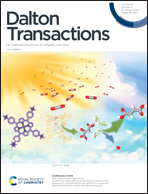Synergistic design of a semi-hollow core–shell structure and a metal–organic framework-derived Co/Zn selenide coated with MXene for high-performance lithium–sulfur batteries†
Abstract
Lithium–sulfur batteries have garnered significant interest as potential energy storage systems for the future, owing to their remarkable theoretical specific capacity (1675 mA h g−1) and energy density (2600 W h kg−1). However, their development has been severely impeded by several challenges, including the low intrinsic conductivity of sulfur, volume expansion issues, and the polysulfide shuttle effect. To address these issues, polar metal compounds with nanostructures featuring hollow shells and catalytic functions have emerged as promising materials for designing advanced lithium–sulfur batteries. In this study, bimetallic selenides with varying degrees of hollowness are synthesized using a tannic acid etching and selenization strategy. By comparing the electrochemical characteristics of composite electrodes with different degrees of hollowness, an optimal semi-hollow core–shell structure is identified, implying that reasonable structural designing of metal compounds carries immense importance in improving electrochemical reactions. Moreover, the appropriate degree of hollowness effectively mitigates volume expansion issues associated with the sulfur cathode. Consequently, bimetallic selenides with a hollow core–shell structure coated with conductive MXene material exhibit superior electrochemical performance. The synergistic effect achieved through the judicious design of the hollow core–shell structure and the utilization of polar metal compounds has proved instrumental in enhancing the redox kinetics of lithium–sulfur batteries. As such, this research presents a novel avenue for the development of high-performance lithium–sulfur batteries.



 Please wait while we load your content...
Please wait while we load your content...